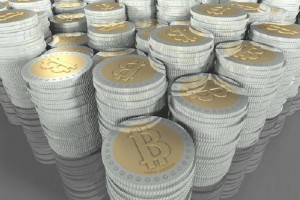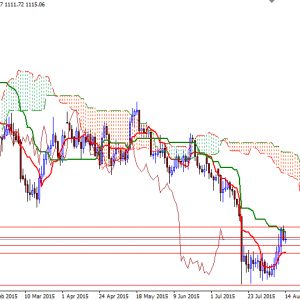Latest Posts
-
Finance 0
Will IMF Help Athens Pay Its Debts?
Eurozone finance ministers gave the green light to an 85 billion euro bailout for Greece on Friday, an indication interpreted by some lawmakers as a definite sign that Greece is interested in remaining a member of the euro area. The bailout approval came about despite the growing resistance within Alexis Tsipras’ Syriza party as well as concerns about the longer-term sustainability of Greece’s public debt. Some Eurozone members worry about the extent of involvement by the International Monetary Fund that would enable Athens to honor its August 20 repayment deadline with the European Central Bank. Merkel Reassures Returning after a short s...On August 17, 2015 / By Kurt Osterberg -
Finance 0
Treasury Yields: A Long-Term Perspective
Let’s have a look at a long-term perspective on Treasury yields. The chart below shows the 10-Year Constant Maturity yield since 1962 along with the Federal Funds Rate (FFR) and inflation. The range has been astonishing. The stagflation that set in after the 1973 Oil Embargo was finally ended after Paul Volcker raised the FFR to 20.06%. The first three charts below are based on weekly averages of daily closing yields. Click on picture to enlarge Now let’s overlay the S&P 500 to see historical pattern of equities versus treasuries. This is a nominal chart, which significantly distorted the real value of both yields and equity ...On August 17, 2015 / By Kurt Osterberg -
Finance 0
Currency Wars Take The Spotlight As Stock Investors Must Gauge Which News Is Relevant
Much ado was made of China’s surprise 3% devaluation of their currency last week. But keep in mind, the yuan is pegged to the dollar, and with the dollar so strong, every major floating currency and commodity is down a lot more than that. Deflation is now a real threat. Then, there is the suddenly resolved issue of Greece’s debt (along with the worry of a domino-like fall of the entire Eurozone). Also, with earnings season drawing to a close, it is evident that both revenues and earnings are down from the same quarter last year, and yet about 70% of S&P 500 companies beat earnings expectations (albeit at a lowered bar). Overall, the ...On August 17, 2015 / By Kurt Osterberg -
Finance 0
The Dollar Rally – From The Japanese Perspective
The Japanese yen has peaked against the dollar. The dollar in fact elected a yearly bullish reversal at the end of 2014. This is yet another confirmation that we are facing a strong dollar ahead ushering in this age of deflation, which should start to hit in the USA after October. This is impacting everything not the least of which has been commodities and interest rates as hoarding cash rises. While the commodity bulls have kept touting China from every angle since their consumption reached almost 50% in 2011 of total world output, China’s economy entered a recession with 2007 and despite the recent reaction stock rally, we are also wi...On August 17, 2015 / By Kurt Osterberg -
Finance 0
How The Wall Street Ponzi Works – The Stock Pumping Swindle Behind Four Retail Zombies
In the nearby column Jim Quinn debunks Wall Street’s latest claim that the American consumer is bounding back. He points out that on an inflation-adjusted basis retail sales are still barely higher than the were a year ago, and, for that matter, are only 4% higher in real terms than they were way back in November 2007. That’s right. Nearly eight years and $3.5 trillion of Fed money printing later, yet the vaunted American consumer is struggling to stay above the flat line, not shopping up a storm. And there is no mystery as to why. After a 40-year borrowing spree culminating in the final mortgage credit blow-off on the eve of...On August 17, 2015 / By Kurt Osterberg -
Finance 0
82% Of Economists Expect September Rate Hike… It’s Not Such A Sure Thing
As we get closer and closer to the month of September, the discussions with regard to the Federal Reserve’s interest rate is coming up more and more. While no one knows exactly when the Fed is going to raise rates, we’ve seen quite a few predictions recently. As a matter of fact, a recent Fortune poll shows that 82% of economists are expecting the rate hike to happen in September. However, I’m not convinced that the US will be ready for a rate hike in September. Today, we’ll talk about the factors that may help drive a hike, the factors that I think are likely to hinder any increase in rates, and what we can expect t...On August 17, 2015 / By Kurt Osterberg -
Finance 0
Gold Ends Week Above $1110
Gold prices settled at $1115.06 per ounce, gaining nearly 1.9% over the course of the week, as increasing demand for protection against volatility in global equities markets lured some buyers back into the market. Gold had enjoyed a bounce earlier in the week, following the turmoil caused by Beijing’s surprising actions, but dented some of those gains after a string of economic data renewed expectations of a September rate hike by the Federal Reserve. The Labor Department said that producer price index advanced 0.2% and the Federal Reserve reported that industrial production jumped %0.6 in July. The week ahead will see the minutes from ...On August 17, 2015 / By Kurt Osterberg -
Finance 0
3 Investing Tips For Millennials
An April survey from Bankrate.com found that just 26% of Americans under 30 are invested in the stock market. Heavy student debt is one obvious reason, but there are other factors, as well. The financial crises of the last decade have given millennials the impression that Wall Street isn’t exactly honest and that investing is best left to the pros. That could explain why a whopping 40% of millennials’ money is in cash equivalents. Unfortunately, cash equivalents won’t grow enough to fund their future needs. In fact, money invested in cash equivalents probably won’t even keep pace with inflation, let alone provide funds for important...On August 17, 2015 / By Kurt Osterberg -
Finance 0
EU Session Bullet Report – USD Recovers, EUR In Neutral Zone
USD Recovers, EUR in neutral Zone The USD is slowly recovering from its slide last week, following the news that china was devaluing its currency. Although the probability of the FED increasing rates in September wasn’t helped by the mixed data on Friday, it seems that optimism has returned in favor of this scenario. EURUSD would now need to break 1.1080 and 1.1045 key support levels in order to favor a further downside. The market now awaits EZ trade figures in what is expected to be a very quiet Monday due to the lack of further news. Last week, the main theme was the devaluation of the CNY due to the diminishing growth of the export sect...On August 17, 2015 / By Kurt Osterberg -
Finance 0
Asian Currency Crisis Continues As China Holds, Malaysia Folds, & Japan Heads For Quintuple Dip Recession
Asia got off to an inauspicious start this evening with Japan printing a disappointing 1.6% drop in GDP – heading for its fifth recession in 6 years… so much for Abenomics, but, of course, Amari spewed forth some standard propaganda that he expects Japan to recover moderately (and Japanese stocks popped modestly assuming moar QQE). Then Malaysia continued its collapse with the Ringgit down another 1% hitting fresh 17-year lowsand stocks dropping further, as the Asian Currency crisis continues. Heading into the China open, offshore Yuan signaled further devaluation but the CNY Fix printed very modestly stronger at 6.3969; and f...On August 17, 2015 / By Kurt Osterberg
Top Posts
-
 The Importance for Individuals to Use Sustainable Chemicals
The Importance for Individuals to Use Sustainable Chemicals
-
 Small Businesses: Finding the Right Candidate for the Job
Small Businesses: Finding the Right Candidate for the Job
-
 How to Write the Perfect Thank You Letter After Your Job Interview
How to Write the Perfect Thank You Letter After Your Job Interview
-
 3 Best Large-Cap Blend Mutual Funds For Enticing Returns
3 Best Large-Cap Blend Mutual Funds For Enticing Returns
-
 China suspected in massive breach of federal personnel data
China suspected in massive breach of federal personnel data
















